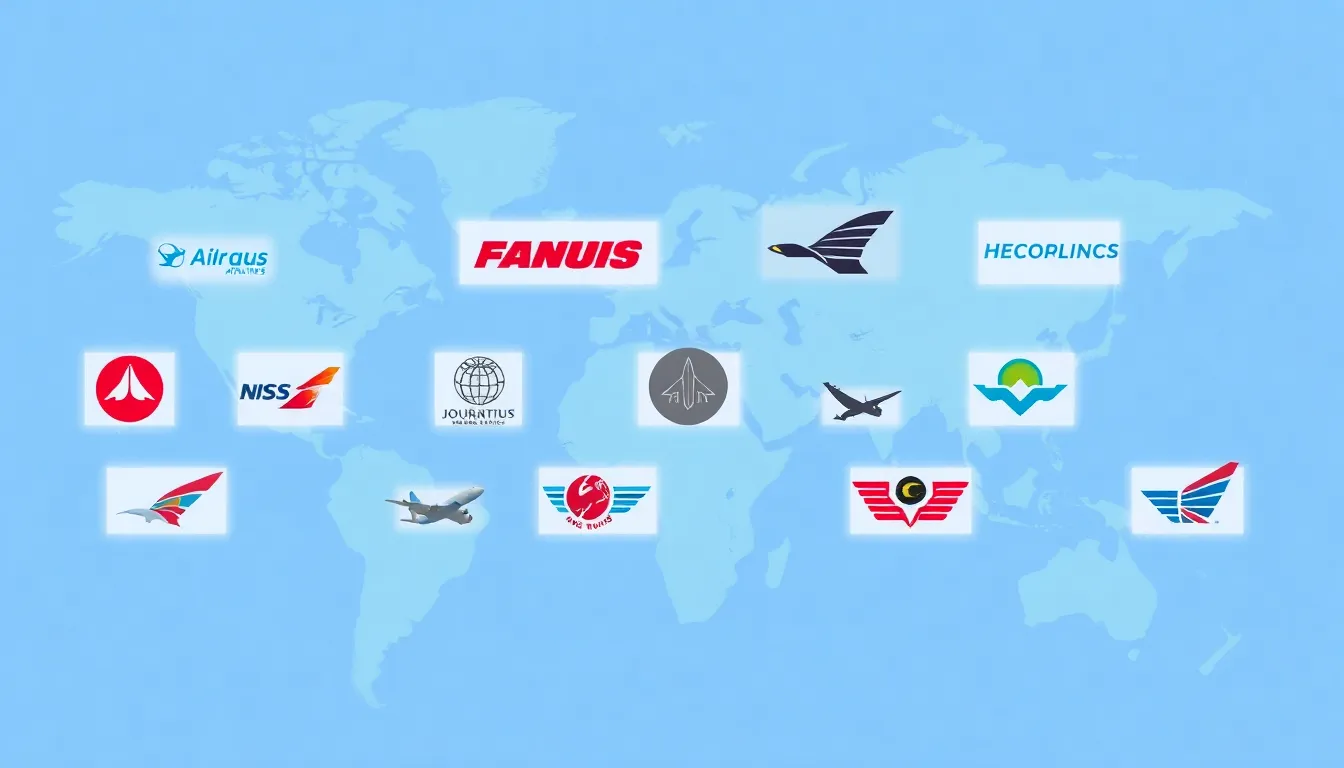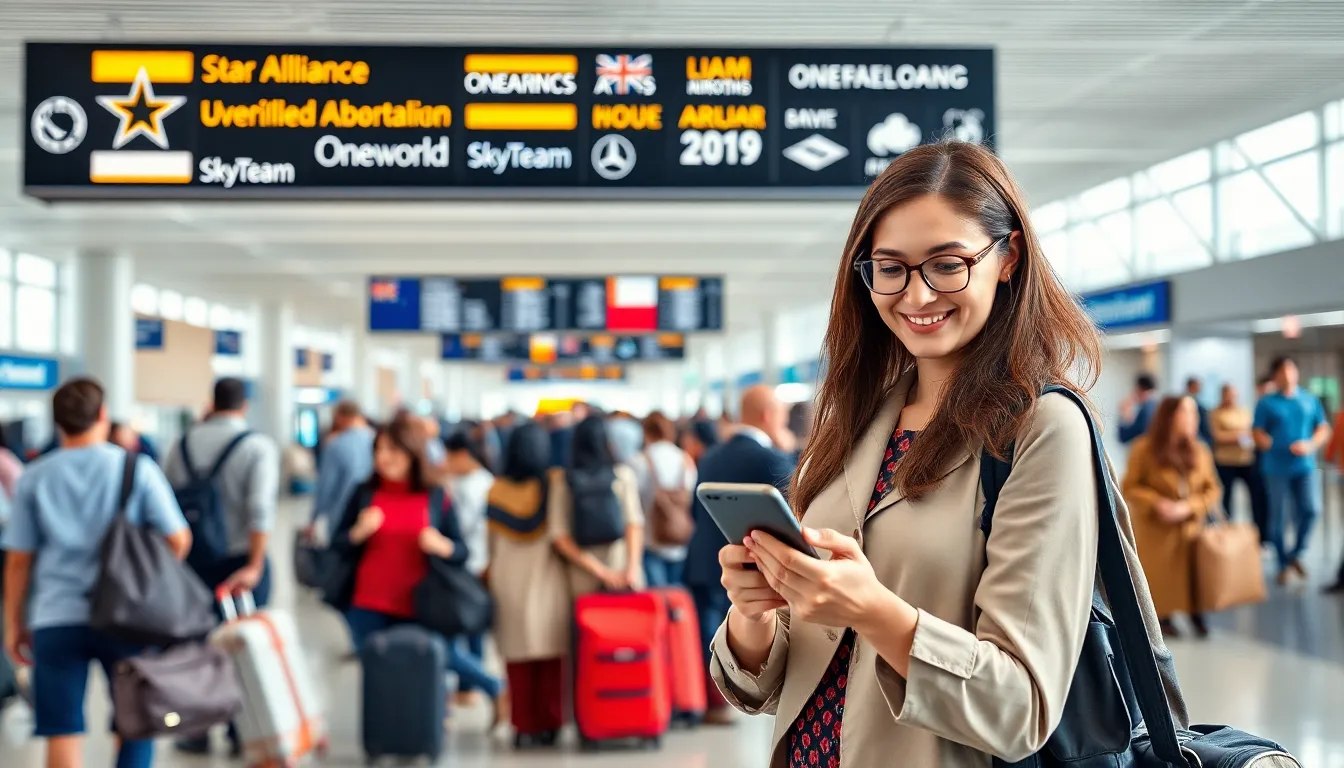Table of Contents
ToggleIn an ever-evolving aviation landscape, airline alliances play a crucial role in shaping travel experiences for millions. These partnerships allow airlines to collaborate, offering passengers a seamless journey across multiple carriers while expanding their global reach. With major alliances like Star Alliance, Oneworld, and SkyTeam, travelers can enjoy benefits such as shared frequent flyer programs and coordinated schedules.
Understanding the dynamics of airline alliances is essential for savvy travelers and industry professionals alike. By leveraging these partnerships, airlines can enhance their service offerings and improve operational efficiency. For passengers, this means more choices, better connectivity, and increased loyalty rewards. As the industry continues to adapt, the significance of these alliances only grows, making it a topic worth exploring.
Overview of Airline Alliances
Airline alliances are strategic partnerships formed between multiple airlines to enhance operational synergy and customer benefits. These alliances aim to provide passengers with a seamless travel experience through coordinated schedules, shared resources, and a unified frequent flyer program.
Three major alliances dominate the global landscape:
- Star Alliance: Established in 1997, this alliance includes 26 member airlines, offering extensive network coverage across over 1,300 airports worldwide. Members include Lufthansa, United Airlines, and Singapore Airlines, facilitating optimized flight connections and enhanced service offerings.
- Oneworld: Formed in 1999, Oneworld currently consists of 14 member airlines that cover more than 1,000 destinations. Prominent members include American Airlines, British Airways, and Cathay Pacific, focusing on improving travel ease and customer loyalty across its network.
- SkyTeam: Launched in 2000, SkyTeam encompasses 19 member airlines, allowing coordinated travel across 1,150 destinations in more than 175 countries. Key members include Delta Air Lines, Air France, and KLM, promoting streamlined services and loyalty rewards.
Each alliance not only provides operational efficiency but also enhances customer experience. Passengers benefit from shared frequent flyer programs, allowing them to earn and redeem miles across member airlines, as well as access to exclusive lounges and priority boarding.
Understanding airline alliances is vital for travelers and industry professionals. This knowledge enables informed travel choices, maximizing loyalty rewards and optimizing flight itineraries, thus improving the overall travel experience. As the aviation industry evolves, these alliances continue to play a significant role in shaping the competitive landscape.
Types of Airline Alliances

Airline alliances primarily fall into two categories: global alliances and regional alliances. Each type plays a vital role in enhancing connectivity for travelers across various markets.
Global Alliances
Global alliances include major partnerships among airlines that operate worldwide. They facilitate broad network connectivity and seamless travel experiences. Key examples include:
- Star Alliance: Formed in 1997, encompasses 26 member airlines, offering access to over 1,300 airports across 195 countries.
- Oneworld: Established in 1999, comprises 14 member airlines, enhancing customer loyalty and travel efficiency through coordinated services.
- SkyTeam: Launched in 2000, consists of 19 member airlines, promoting streamlined flight schedules and extensive loyalty reward programs.
These alliances enable passengers to earn and redeem frequent flyer miles across member airlines, improving travel value and flexibility.
Regional Alliances
Regional alliances consist of airlines collaborating within specific geographical areas. They aim to strengthen local connectivity and compete with global carriers. Notable examples include:
- Airline Association of Latin America (Alaa): Focuses on enhancing air travel in Latin America among member airlines.
- Association of Southeast Asian Nations (ASEAN): Promotes partnerships among Southeast Asian carriers, aiming to improve regional travel across multiple nations.
Regional alliances optimize service offerings and expand destinations while providing travelers with a more cohesive experience within their geographical limits.
Benefits of Airline Alliances
Airline alliances offer numerous advantages that enhance travel experiences and operational efficiency. Key benefits include enhanced connectivity and cost efficiency.
Enhanced Connectivity
Enhanced connectivity stands as a core benefit of airline alliances. Passengers gain access to a larger network of routes through partnerships among member airlines. Individual airlines often serve limited destinations. However, alliances like Star Alliance and Oneworld expand travel options significantly. For example, passengers can easily transfer between airlines within the same alliance, facilitating smoother connections and shorter layover times. Coordinated schedules among these airlines reduce waiting periods at hubs, allowing for seamless travel experiences. Additionally, members can earn and redeem frequent flyer miles across the entire alliance, maximizing rewards for frequent travelers.
Cost Efficiency
Cost efficiency is another significant benefit of airline alliances. Alliances reduce operational expenses through shared resources, including airport lounges, staffing, and ground services. Airlines can consolidate certain operations, leading to lower costs for passengers. For example, joint marketing campaigns help airlines promote routes and services without incurring individual expenses. Furthermore, competitive fare structures emerge as alliances enable airlines to align pricing strategies, making air travel more affordable for customers. These cost savings often translate into lower ticket prices, benefiting travelers directly.
Challenges Faced by Airline Alliances
Airline alliances encounter several challenges that can affect their effectiveness and operational smoothness. Key issues include regulatory hurdles and competition-related problems that influence their ability to optimize services.
Regulatory Hurdles
Regulatory obstacles often complicate airline alliance operations. Governments impose varying regulations on international and domestic flights, influencing agreements and operations among member airlines. Compliance with antitrust laws can restrict collaboration, limiting fare coordination and capacity management. Notably, the European Union scrutinizes mergers and alliances to prevent market monopolization, requiring airlines to justify partnerships based on consumer benefits. Such regulatory environments create complexities, potentially delaying enhancements in service and efficiency.
Competition Issues
Competition among airlines within alliances presents significant challenges. Despite collaboration, member airlines compete for market share, leading to conflicts in pricing strategies and service offerings. Competition often results in inconsistent customer experiences, where varying standards among partner airlines may frustrate passengers. Additionally, low-cost carriers can disrupt traditional alliances by offering lower fares and simplified services, drawing customers away from full-service airlines. These competitive dynamics compel alliances to continuously innovate and adapt to stay relevant in a rapidly changing aviation landscape.
Airline alliances play a pivotal role in shaping the travel experience. They offer passengers enhanced connectivity and valuable rewards through partnerships among major carriers. By understanding the intricacies of these alliances, travelers can navigate their options more effectively and enjoy the benefits that come with shared resources and coordinated schedules.
As the aviation industry continues to evolve, the adaptability of these alliances will be essential in addressing challenges while maintaining customer satisfaction. Recognizing the advantages and potential hurdles allows both travelers and industry professionals to make informed decisions, ultimately leading to a more efficient and enjoyable flying experience.




